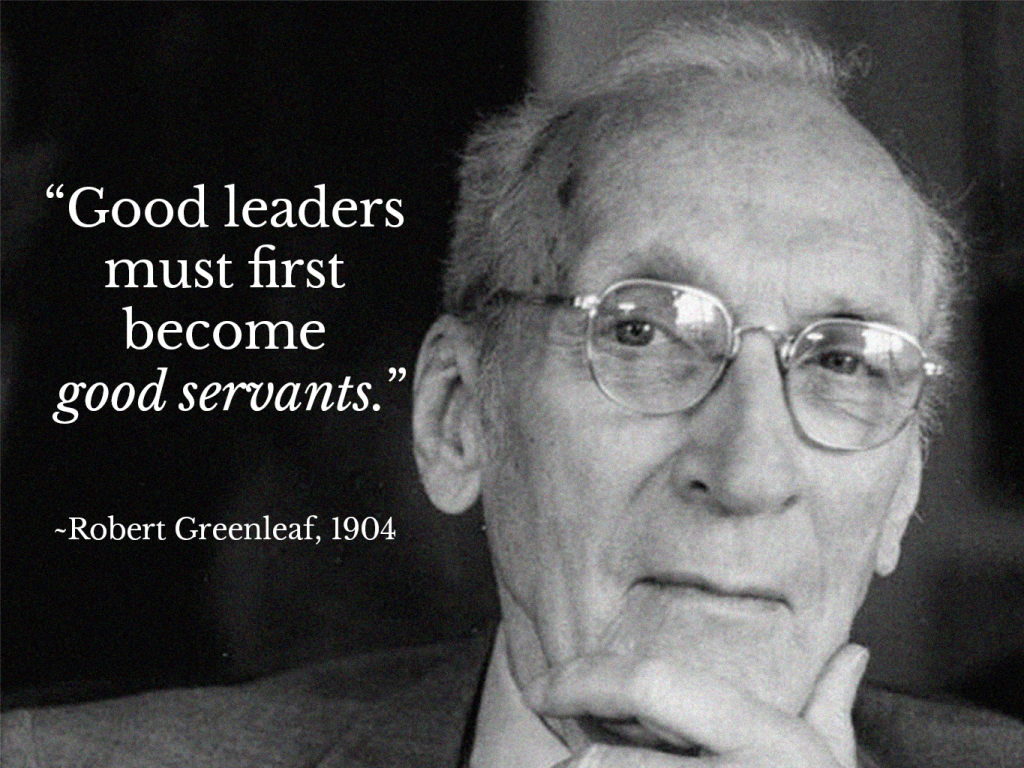*This is an excerpt from the essay All Shine: How Stewardship Built a Vision
The following list of principles was s developed by Robert Greenleaf. The categories are drawn from the literature, but the descriptions are in my own words. For a more in-depth look at the Ten Principles, please visit this website, which provides a description written by Larry Spears.
Listening – A servant leader truly listens to people, not just to understand but to address needs as they arise and are communicated. Surprisingly, humility is not listed as one of the top characteristics of Servant Leadership, but can be included here as the close cousin to listening. Without humility, the servant leader can never learn and certainly has no reason to listen.
Empathy – Compassionate leaders care about people they are working with, the people served by the enterprise they are leading, and the community in which their organization operates, including the larger world community.
Healing – A leader who cares about people is committed to wholeness and healing. If she recognizes a deficiency or need in a person, she works to find ways for that person to heal and to become more complete. This is not an annoying distraction from the organizational mission or business bottom line, but an important part of building and sustaining a team of mutually trusting partners.
Awareness – A person who has formal authority in any situation, including a workplace, group project or national organization has enormous power to make a difference. This is why it’s key to elevate people to leadership positions who have a sophisticated awareness about many things. Awareness of the impact of their work, the patterns of behavior on their team, and the importance of gathering information from multiple sources to ensure the best way forward.
Persuasion – Leaders who care about people do not cause harm. They recognize that forcing others to act or to take a position is a harmful action, and thus, seek to persuade people with reasoned argument and an appeal to the mission. They are not coercive.
Conceptualization – Like Transformational Leaders, Servant Leaders provide a compelling framework for the work they are doing in concert with others. They take care to build concepts that appeal to the hearts and minds of people and that promote values that directly relate to the mission.
Foresight – Socially responsible leaders look ahead to potential fallout and beneficial outcomes of their actions and the actions of the enterprises they lead. They contemplate not only the ways in which their organization might benefit from specific actions but how decisions and actions impact their people and the community around them. In other words, they take the long view.
Stewardship – The word stewardship has become a popular piece of jargon, but the principle is profound and important. Too many stories are coming out that tell the tale of a CEO who comes on board at the eleventh hour of a business and runs it into the ground before walking away with millions of dollars and a large workforce unemployed and destitute. A Servant Leader comes on board to rescue the business or to work with people to find ways to close the business that can benefit the largest amount of people as possible. She takes seriously her responsibility to steward the enterprise in a way that helps the micro-community of the business or organization and the macro-community in which the enterprise operates.
Commitment to the Growth of People – This is a big one. Regardless of the original mission or reason that people come together, a leader who wishes to serve the common good is first and foremost committed to growing as a person, allowing others to help her grow as a person, and helping other people to grow. Whether coming together to record a music album, making a full-length feature film, running a public school, or building a legal case, the people with formal authority to set the tone for the community of people always have their eye on the common good as the greater, over-arching purpose. In this category, stewardship takes on a broader meaning. What is ultimately and always stewarded is the building of a better world because people have the chance to grow.
Building Community – All of the above principles act in concert to build a positive community. Because of the principles of listening, awareness, persuasion, stewardship, healing, awareness and empathy, there is little room for a “cult of personality.” Furthermore, if the conceptualization of the community’s mission is clear and includes foresight, there will be a built-in understanding of the ways in which authoritarianism and “cultishness” can be avoided. This is partly related to a commitment to the growth of people. People can only grow if a community isn’t all about the “leader” and if there’s room for feedback and development of the leader himself. Ultimately, this kind of community is made up of Servant Leaders, all of whom take turns to step into the role of stewarding the community’s process at one time or another.



